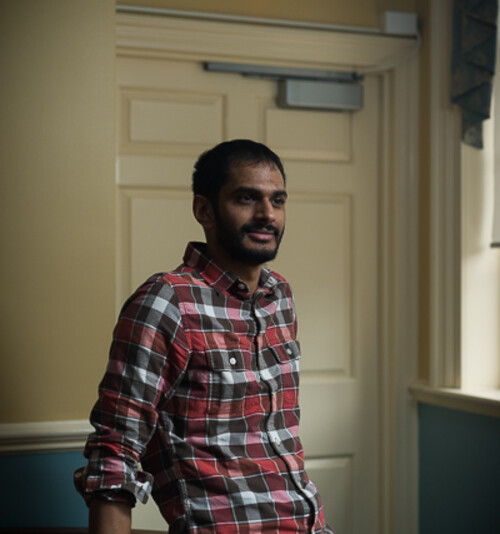Ashok Kumar

Some acts of innovative engineering occur at the frontiers of technological advancement. But others come about through the elegant recombination of long-familiar principles. Ashok Kumar plans to revolutionize the treatment of sickle-cell anaemia, making a diagnosis for the disease possible in parts of the world without easy access to large facilities for the analysis of blood samples. And he’s doing it with some simple centrifuges and car batteries.
“We took two different pieces of knowledge, both decades old, and put them together,” says Ashok, a member of George Whitesides’s research group in the department of chemistry and chemical biology. “We knew that aqueous polymers with different densities can form stable, self-sorting layers. Like oil and water. And we knew that sickle-cells have a different density than healthy red blood cells.” When spun in a centrifuge with such polymers, then, a blood sample’s revealed density can serve as a quick and easy visual diagnosis for the disease. “We’re down to a cost of about fifty cents, and a time of twelve minutes from pinprick to reading.”
In the US, newborns are routinely screened for sickle-cell at birth. In Sub-Saharan Africa, though, no widespread screening is possible, and most of those born with the disease die before the age of five. Ashok recently finished a six-month trial of his rapid-test hematology in Zambia, and hopes that his simple system will make sickle-cell diagnosis possible for small clinics across the rural developing world.
Since serving in the Peace Corps after college, Ashok has sought to apply science to the problems of international development. “I always enjoyed physics,” he says, “but growing up I had a sense of there being more to the world, and a desire to learn what the real needs and inequities out there were, and how to address them.”

